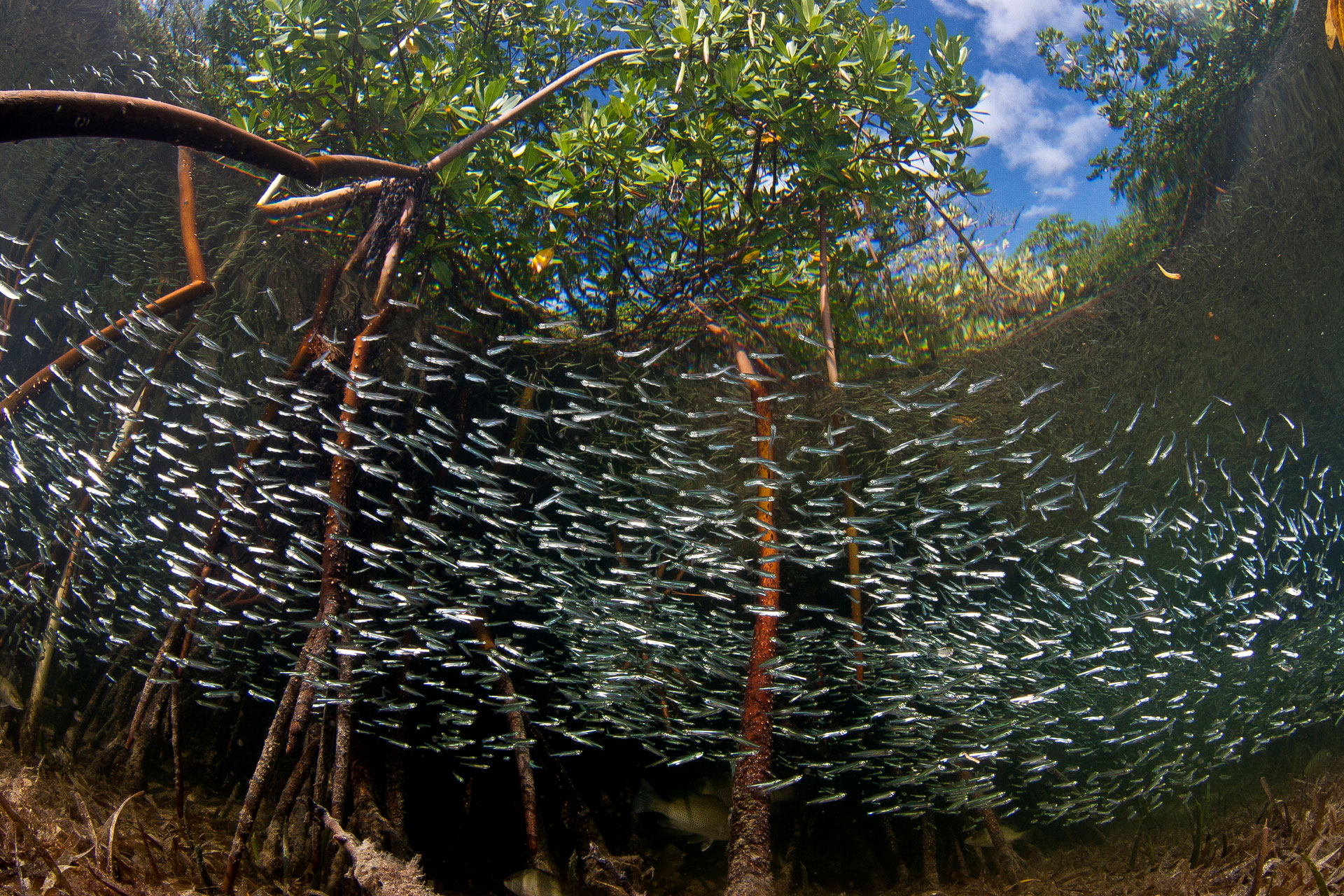The perks and privileges of working outdoors at Bimini
This summer I spent 39 days on top of four-metre-high wooden lookout towers, scanning the waters of Bimini with one objective: to record the behaviour of juvenile lemon sharks. Although the sharks themselves are an absolutely amazing sight, Bimini treated me and my team to many more incredible encounters.

Situated between the Bimini lagoon and some mangrove islands, the project location attracted an incredible diversity of wildlife. Photo © Sirachai Arunrugstichai | Save Our Seas Foundation (Jack Massuger as drone pilot).
I believe that the area where I set up my summer experiments is a perfect place for a romantic date – and nurse sharks seem to agree with me. From my towers I was able to observe groups of nurse sharks mating in a succession of caudal, pectoral and dorsal fins moving in and out of the water.
It was clear that my experiments were also taking place on what I called ‘Shark Highway’, where almost every day, at the same tidal phases, lemon sharks and nurse sharks (adults and sub-adults) were entering or leaving the lagoon in groups of two or three. On one occasion there were no fewer than eight lemon sharks! With a bit of luck and good timing we were also able to spot the sharks early in the morning when we crept our way up the shallows to reach the study site and saw their dorsal fins cutting the glassy surface of the water in the morning fog.

Photo © Charlotte Sams. Adult lemon sharks paid us a visit almost daily, their fins slicing through the surface of the shallow water.
Sharks aren’t the only elasmobranchs that appreciate this part of Bimini. We spotted dozens of stingrays every day and eagle rays would sometimes come to give us a performance. On one trip I even saw my first newborn stingray (which I affectionately called a ravioli) – a pretty rare sight in Bimini.
And there are also more than just elasmobranchs in these waters. Barracudas, horse-eyed jacks, bar jacks, mojarras, grunts and needle fishes paid us multiple visits and mysterious caudal fins popped out of the water on the sand flats several times, defying our attempts to identify them.

Mangroves are a key habitat in the Bimini ecosystem, their productivity demonstrated by a high density and diversity of fishes. Photo © Matthew D. Potensky.
Working next to the mangroves enabled us to enjoy a birdwatchers’ paradise. The flight of a group of white ibises just over our heads in the late afternoon light made us feel like we were in a National Geographic documentary. But the best present Bimini offered this year was the opportunity to observe the first few weeks in the life of three juvenile green herons. They were in a nest 10 metres away from my observation station so we were able to watch them every day for several weeks. We witnessed their first hops from mangrove to mangrove, peeping and squawking, their steady progress and, in the last few days, their first bold flights over water!
Sitting on these wooden towers this summer gave me more than amazing encounters, heat stroke and weird tan lines. I was able to test more than 70 sharks for personality by means of four different tests and release 14 of them with acoustic transmitters to examine their behaviour in the wild for the next 14 months. When you work with juvenile lemon sharks in Bimini, having an outdoor office is both pleasant and efficient!
